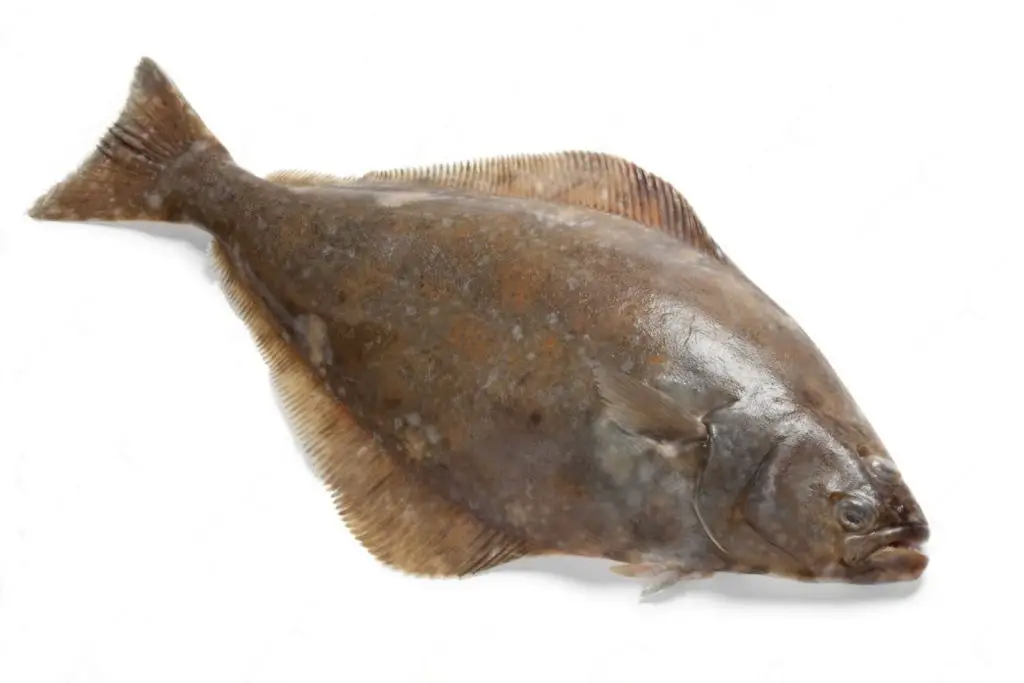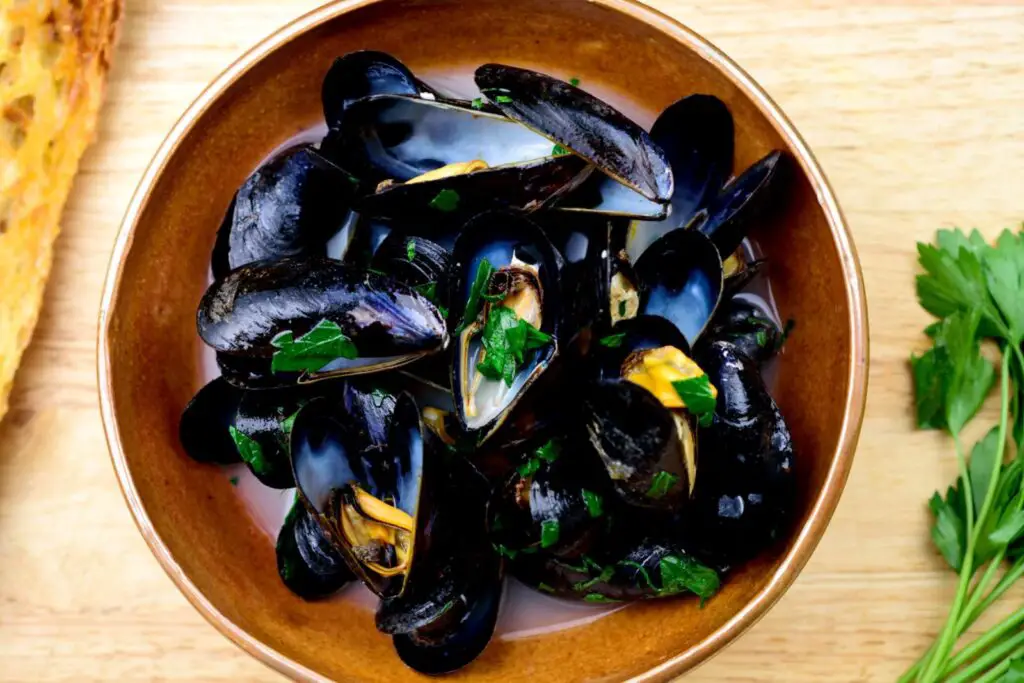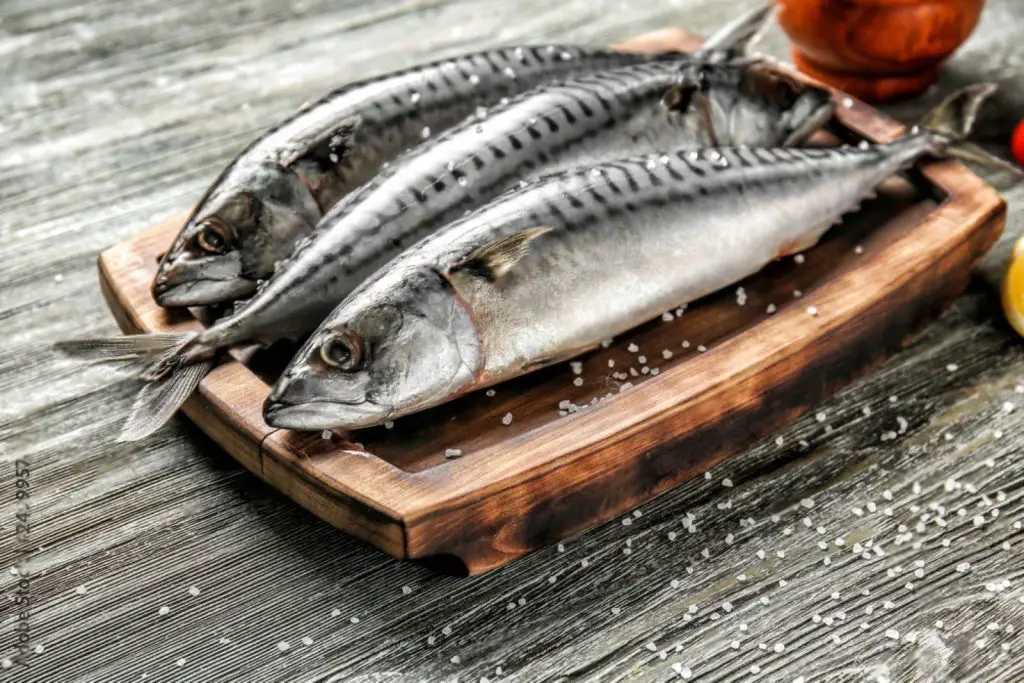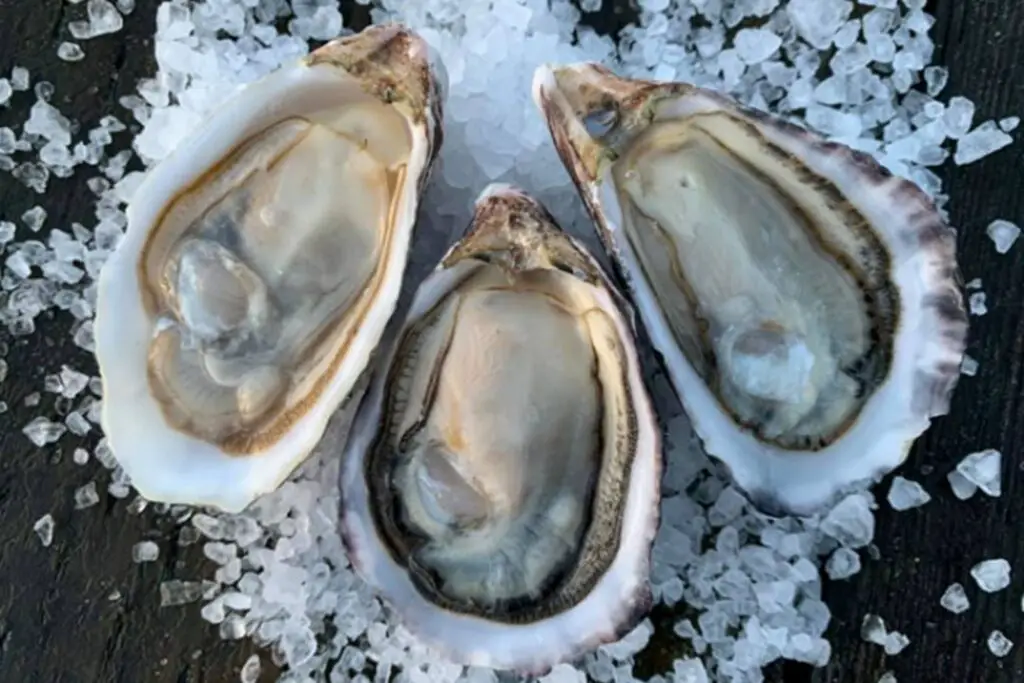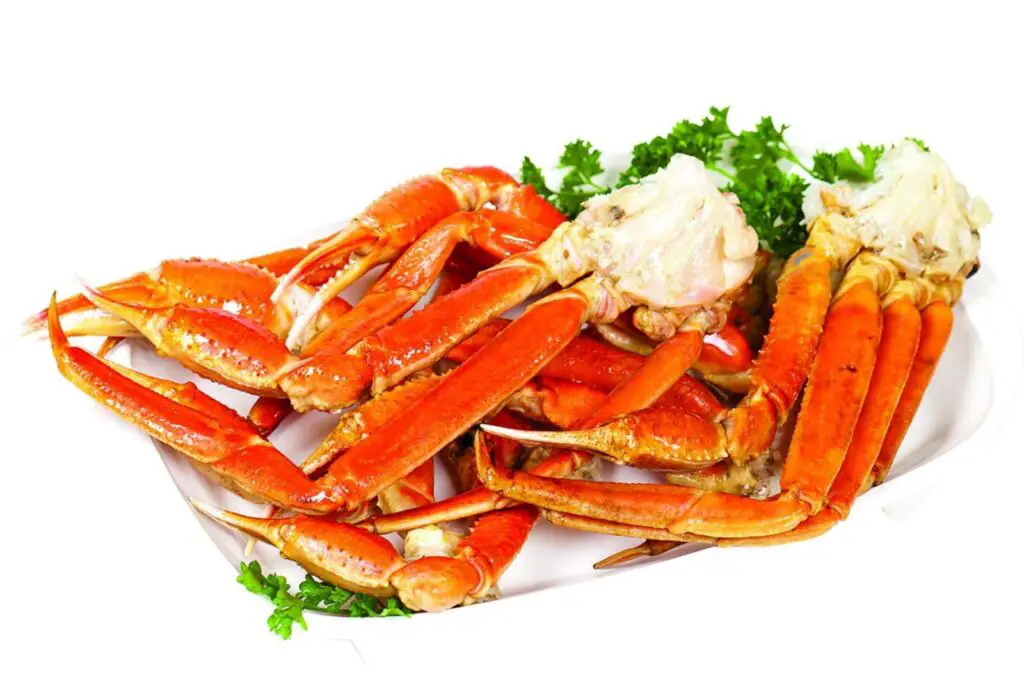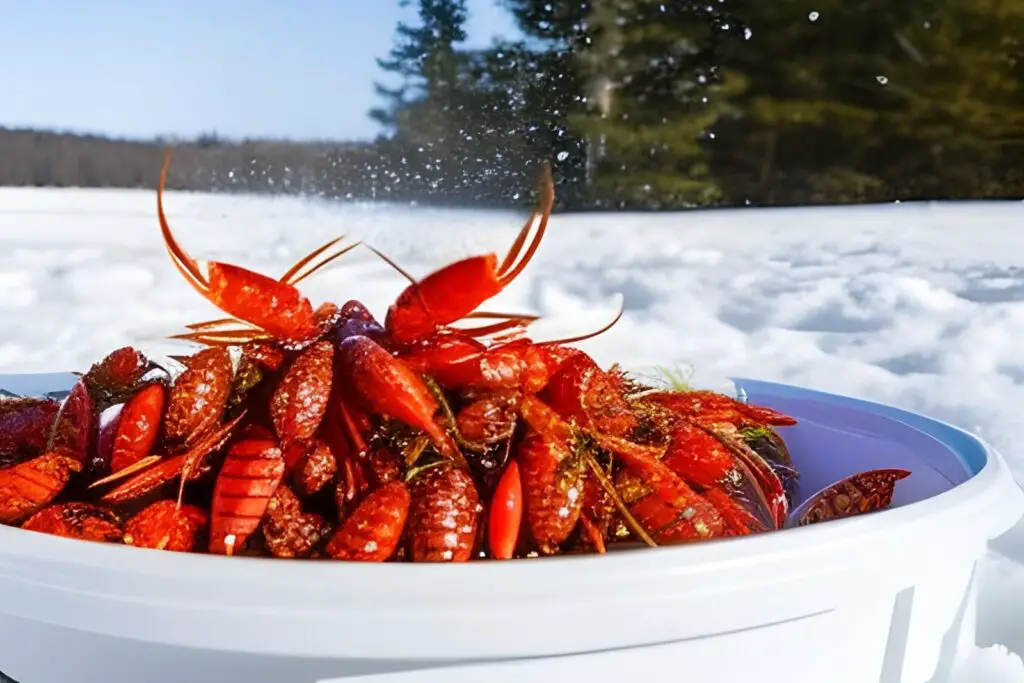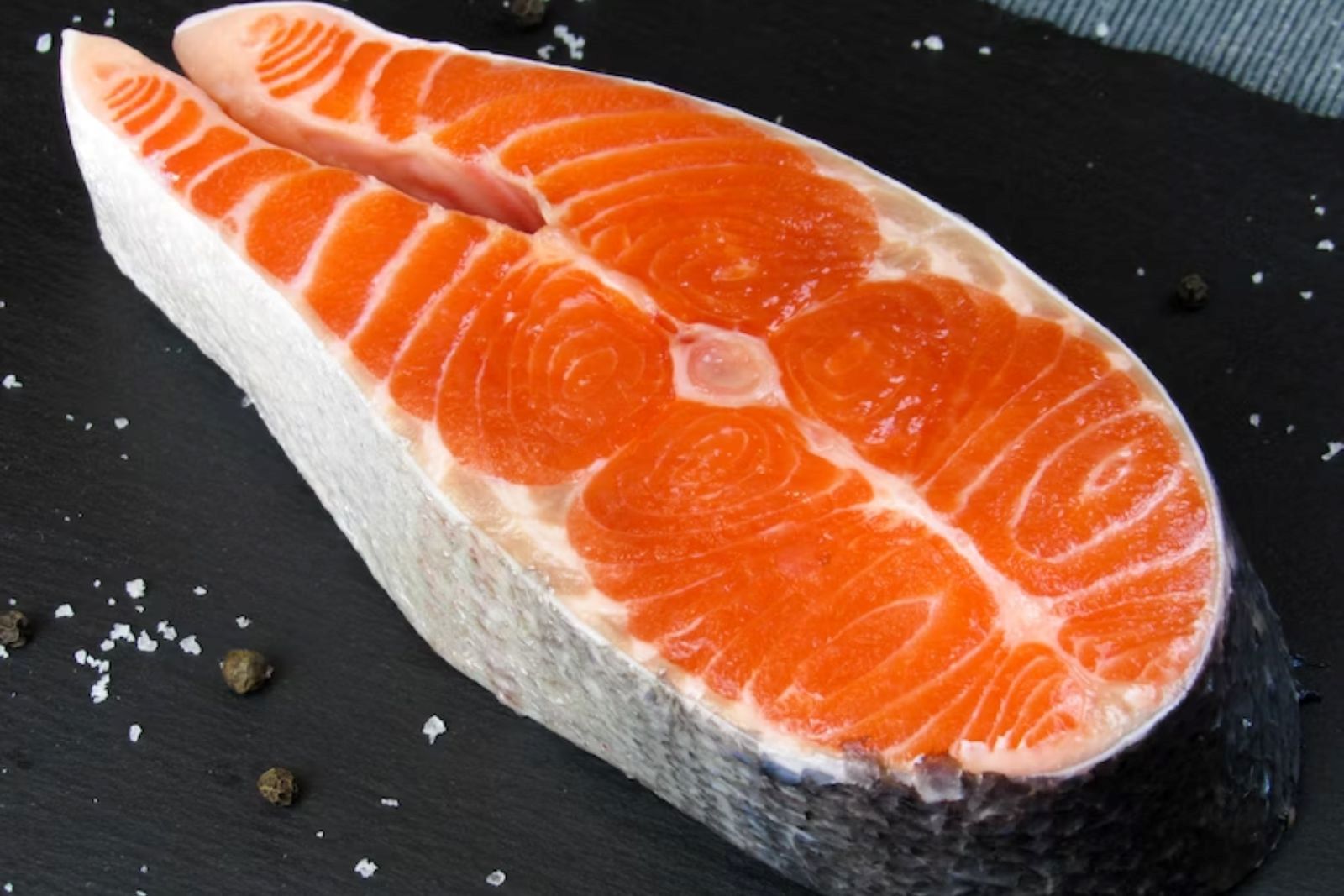
Salmon, a prized and versatile fish, offers a delectable culinary experience with its succulent flesh and distinct flavor. Whether you have an abundance of fresh salmon or want to take advantage of a sale, knowing how to freeze it properly can help preserve its quality for future enjoyment. Freezing salmon allows you to extend its shelf life, ensuring that you have a readily available supply of this nutritious seafood whenever you desire. In this guide, we will explore the steps and techniques to freeze salmon effectively, allowing you to savor its freshness and taste long after its initial catch or purchase.
Here are the simple steps to freeze salmon:
Step 1: Select Fresh Salmon
When it comes to freezing salmon, starting with fresh, high-quality fish is essential. The quality of the salmon you choose will directly impact the taste and texture of the frozen fish. Here’s why this step is crucial and what to look for when selecting salmon for freezing:
- Bright and Firm Flesh: Fresh salmon should have vibrant, firm flesh. The color of the fish can vary depending on the species, ranging from vibrant pink to deep red. Avoid salmon with dull or discolored flesh, as it could indicate poor quality or age.
- Pleasant Aroma: Give the salmon a sniff to assess its aroma. Fresh salmon should have a mild, slightly sweet smell. If you notice any strong or unpleasant odors, it could be a sign of deterioration or spoilage.
- Wild-Caught vs. Farmed Salmon: While both wild-caught and farmed salmon can be frozen, many people prefer the taste and texture of wild-caught salmon. Wild-caught salmon tends to have a richer flavor, firmer texture, and higher omega-3 fatty acid content. However, if wild-caught salmon is not readily available or within your budget, high-quality farmed salmon can also be a good option.
By selecting fresh salmon with bright, firm flesh and a pleasant aroma, you set the foundation for delicious and well-preserved frozen fish. Once you have chosen the ideal salmon, you can proceed to the next step: preparing the fish for freezing.
Step 2: Prepare the Salmon
Properly preparing the salmon before freezing is essential to ensure its quality and ease of handling when it’s time to thaw and cook. Here’s a breakdown of the steps involved in preparing the salmon for freezing:
- Rinsing the Fish: Begin by rinsing the salmon under cold running water. This helps remove any impurities, such as scales or residual slime, that may be present on the surface of the fish. Gently rub the fish with your hands during rinsing to ensure thorough cleaning.
- Drying the Salmon: After rinsing, pat the salmon dry with paper towels or a clean kitchen towel. Removing excess moisture from the fish helps prevent ice crystals from forming and minimizes the risk of freezer burn.
- Removing Bones: Inspect the salmon for any remaining bones. Using tweezers or pliers, carefully remove any bones you come across. Running your fingers along the fish can help you identify any tiny bones that may be present. Removing bones before freezing ensures a more enjoyable eating experience and prevents accidental ingestion of bones while consuming the thawed fish.
- Cutting into Portions: Consider cutting the salmon into portions before freezing, such as fillets or steaks. This step has several advantages. Firstly, it allows for more convenient thawing and portioning when it’s time to cook. Additionally, cutting the fish into portions helps it freeze and thaw more evenly. Remember to use a sharp knife and make clean, straight cuts for consistent portions.
In preparing the salmon, you ensure that the salmon is clean, bone-free, and ready for freezing.
Is it necessary to blanch salmon before freezing it?
It is not necessary to blanch salmon before freezing it, but it can be done as an optional step. Blanching involves briefly immersing the salmon in boiling water or steam to halt enzyme activity and preserve the color and texture. While blanching can help maintain the quality of the fish, it is not essential for freezing salmon and may alter the taste and texture slightly.
Step 3: Wrap to Freeze the Salmon
Properly wrapping the salmon before freezing is crucial to maintain its quality and protect it from freezer burn. Here’s a detailed explanation of how to wrap the salmon for optimal preservation:
- Individual Wrapping: Start by individually wrapping each portion of salmon tightly in plastic wrap. Ensure that the plastic wrap completely covers the surface of the fish, leaving no exposed areas. This step creates a protective barrier that prevents air from coming into contact with the salmon, reducing the risk of freezer burn.
- Sealing Out Air: After wrapping the salmon portions in plastic wrap, place them into resealable freezer bags. Squeeze out as much air as possible from the bags before sealing them shut. Removing excess air helps prevent the formation of ice crystals and maintains the salmon’s texture and flavor.
- Labeling: It’s important to label each freezer bag with the current date using a permanent marker. This labeling allows you to keep track of the storage duration and prioritize consumption based on freshness. Remember to write the date clearly to avoid any confusion later on.
By tightly wrapping each portion of salmon in plastic wrap and placing them in sealed freezer bags, you create a double layer of protection against air exposure and potential freezer burn. This wrapping method ensures that your frozen salmon retains its quality and flavor until you’re ready to thaw and cook it.
Step 4: Label and Storage Duration
Maintaining an organized freezer is essential to ensure easy access and efficient use of your frozen salmon. Here’s a detailed explanation of how to label and store the wrapped salmon:
- Labeling: Using a permanent marker, label each freezer bag containing the wrapped salmon with the current date. This simple step is crucial for keeping track of the storage duration and ensuring that you prioritize consuming the oldest salmon first. Clear labeling helps you avoid confusion and prevents the salmon from being forgotten in the freezer for an extended period.
- Storage Position: Place the labeled freezer bags flat in the coldest part of your freezer. Typically, the coldest areas are towards the back or bottom of the freezer. By laying the bags flat, you ensure even freezing and maximize the use of freezer space. Flat storage also helps prevent the salmon from thawing accidentally if it’s positioned in a way that could cause it to tilt or lean against other items.
- Freezer Organization: Consider dedicating a specific section or shelf in your freezer for storing the salmon. This approach helps maintain organization and makes it easier to locate the salmon when you’re ready to thaw and cook it. If you have multiple batches or varieties of frozen salmon, you may even want to use dividers or freezer-safe containers to keep them separate and organized.
By labeling each freezer bag with the date and storing them flat in the coldest part of your freezer, you establish a systematic approach to storing and accessing your frozen salmon. These steps promote efficient use of space, ensure even freezing, and prevent accidental thawing.
Step 5: Thaw the Frozen Salmon
Properly thawing frozen salmon is crucial to preserve its texture, flavor, and overall quality. Here’s an explanation of the best method for thawing and cooking frozen salmon:
- Thawing in the Refrigerator: When you’re ready to enjoy the frozen salmon, transfer the desired number of portions from the freezer to the refrigerator. Place the salmon in a shallow dish or on a plate to catch any liquid that may accumulate during thawing. Allow the salmon to thaw in the refrigerator overnight or for approximately 8 to 12 hours. Thawing in the refrigerator at a controlled temperature is the best method, as it promotes gradual thawing and helps maintain the fish’s texture and flavor.
- Avoid Quick Thawing Methods: It’s important to avoid quick thawing methods, such as thawing salmon at room temperature or using hot water. These methods can lead to uneven thawing, loss of moisture, and potential bacterial growth, compromising the quality and safety of the fish.
- Cooking Methods: Once the salmon is fully thawed, you can proceed to cook it using your preferred method. Whether you choose to bake, grill, pan-sear, or steam the salmon, there are various delicious options available. Season the salmon with herbs, spices, or marinades according to your taste preferences, and cook it until it reaches an internal temperature of 145°F (63°C). This ensures that the salmon is cooked through and safe to eat while preserving its moisture and tenderness.
By thawing the frozen salmon in the refrigerator overnight and then cooking it using your preferred method, you ensure that the fish retains its texture, flavor, and nutritional value. Thawing in the refrigerator is a slow and safe method that helps maintain the quality of the salmon. Now, you’re ready to savor your perfectly thawed and cooked salmon.
Step 6: Safety and Shelf Life
When it comes to freezing salmon, ensuring safety and understanding the shelf life is essential. Here’s an explanation of the safety guidelines and shelf life considerations for frozen salmon:
- Freezer Storage: Frozen salmon can be stored in the freezer for up to three months while maintaining good quality. However, it’s important to note that the longer the salmon is stored, the more it may experience a decline in flavor and texture. To enjoy the best taste and texture, it is advisable to consume the frozen salmon within one to two months of freezing.
- Safe Food Handling: Always follow safe food handling practices when dealing with frozen salmon. This includes washing your hands thoroughly before and after handling the fish, keeping the salmon at safe temperatures, and preventing cross-contamination with other foods. It’s important to avoid refreezing salmon that has been thawed, as this can affect its quality and increase the risk of bacterial growth.
- Quality Assessment: Before consuming the thawed salmon, perform a visual and sensory check to ensure it is still in good condition. Look for any signs of discoloration, unusual odor, or sliminess, as these can indicate spoilage. If the salmon shows any signs of spoilage, it is best to discard it.
- Freezer Storage Tips: To maintain the quality of frozen salmon, ensure that your freezer operates at or below 0°F (-18°C). Additionally, organizing your freezer and practicing the first-in, first-out method (consuming the oldest salmon first) can help you manage the storage duration effectively.
By considering the recommended shelf life, you can ensure that the frozen salmon remains safe to consume and maintains its desired quality. Adhering to safe food handling practices and being mindful of the storage duration allows you to enjoy delicious and nutritious salmon for an extended period.
How do I know if the salmon has gone bad after being frozen?
To determine if frozen salmon has gone bad, look for signs of spoilage such as significant discoloration, an off or unpleasant odor, or a slimy texture. These indicators suggest that the salmon has deteriorated and should be discarded. It is crucial to follow food safety guidelines and trust your senses when assessing the quality of frozen salmon before consuming it.
Are there any health risks associated with freezing and thawing salmon?
There are generally no health risks associated with freezing and thawing salmon when proper food safety practices are followed. Freezing helps preserve the quality and safety of the fish by inhibiting bacterial growth. Thawing salmon properly in the refrigerator or using safe methods minimizes the risk of bacterial contamination and ensures the fish remains safe for consumption.
Other related questions
Can you refreeze salmon?
It is generally not recommended to refreeze salmon once it has been thawed. Refreezing can lead to a loss of quality, as the texture and flavor may deteriorate. To maintain the best quality and safety, it is advisable to thaw only the amount of salmon needed for immediate use and consume it promptly.
Can I freeze raw salmon for sushi or sashimi?
It is generally not recommended to freeze raw salmon for sushi or sashimi. Freezing may not adequately kill all parasites present in raw fish, which can pose health risks when consumed uncooked. It is best to use fresh, high-quality fish specifically labeled as sushi-grade or sashimi-grade for raw consumption, as these have undergone appropriate handling and processing to ensure safety.
Can I freeze salmon with marinade or seasoning?
Yes, you can freeze salmon with marinade or seasoning. However, it is important to note that the flavors may intensify during freezing, so it’s advisable to use a lighter marinade or seasoning to avoid overpowering the fish. Make sure to properly wrap and store the salmon with the marinade or seasoning, ensuring it is well-sealed to prevent flavor transfer to other foods in the freezer.

